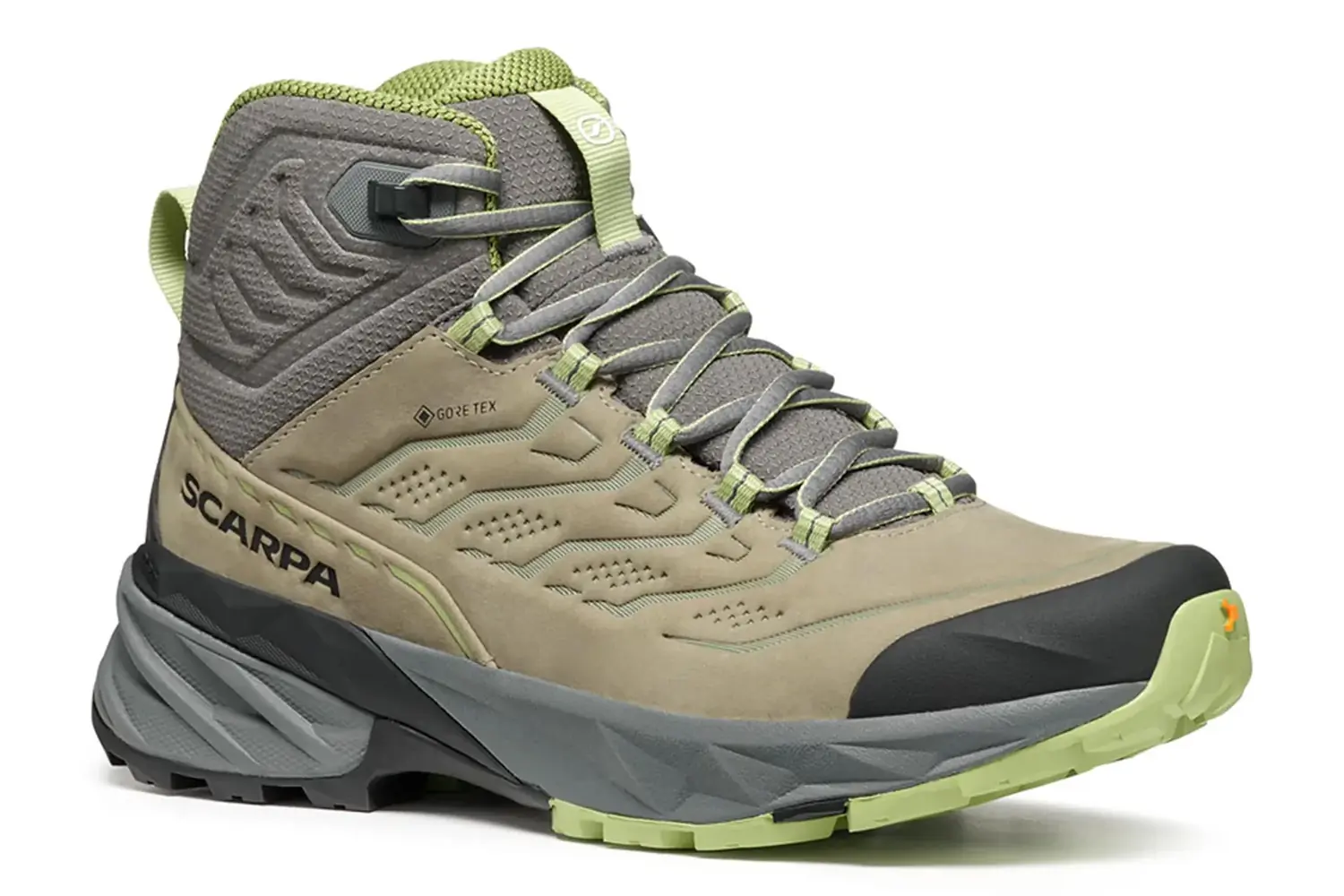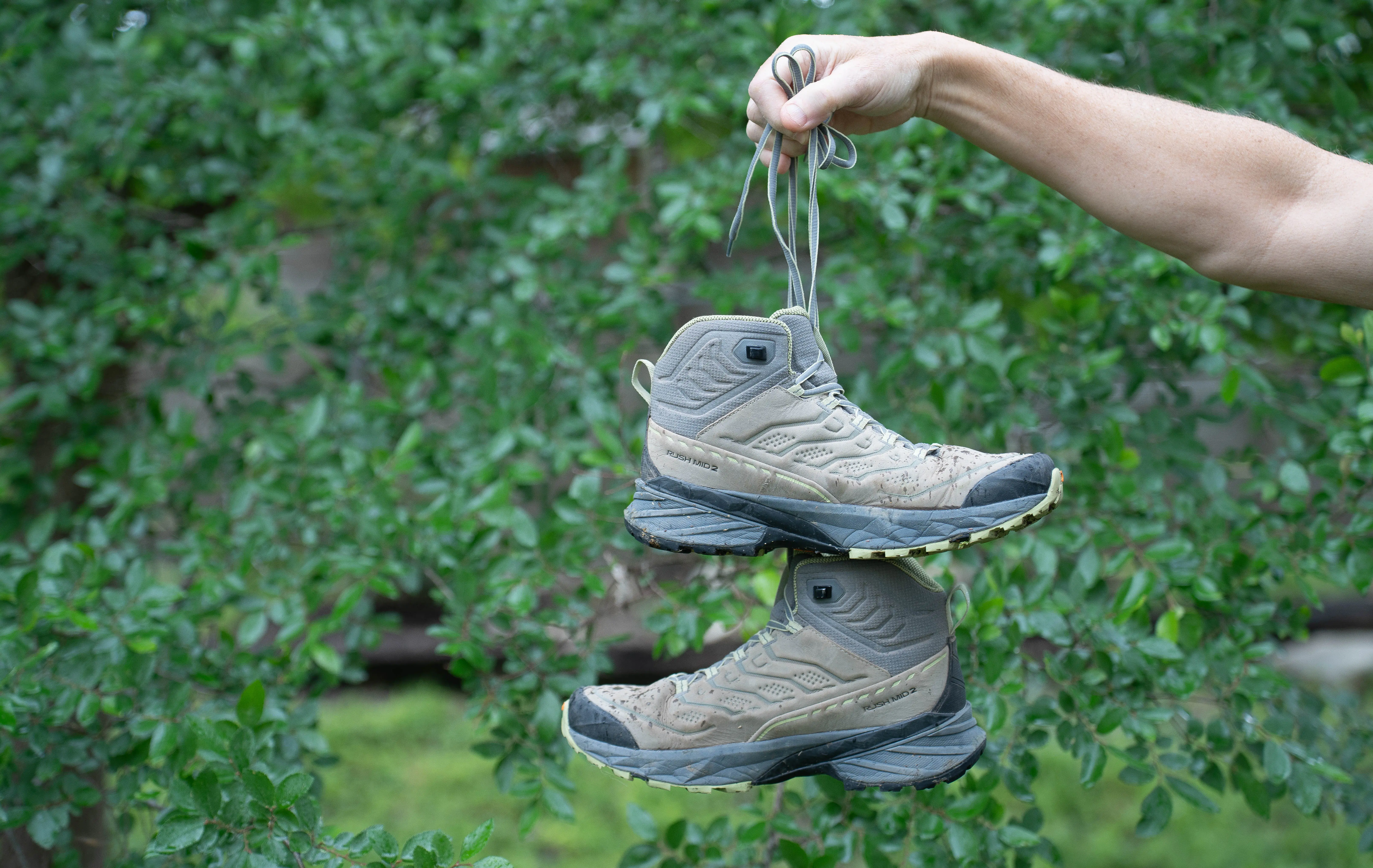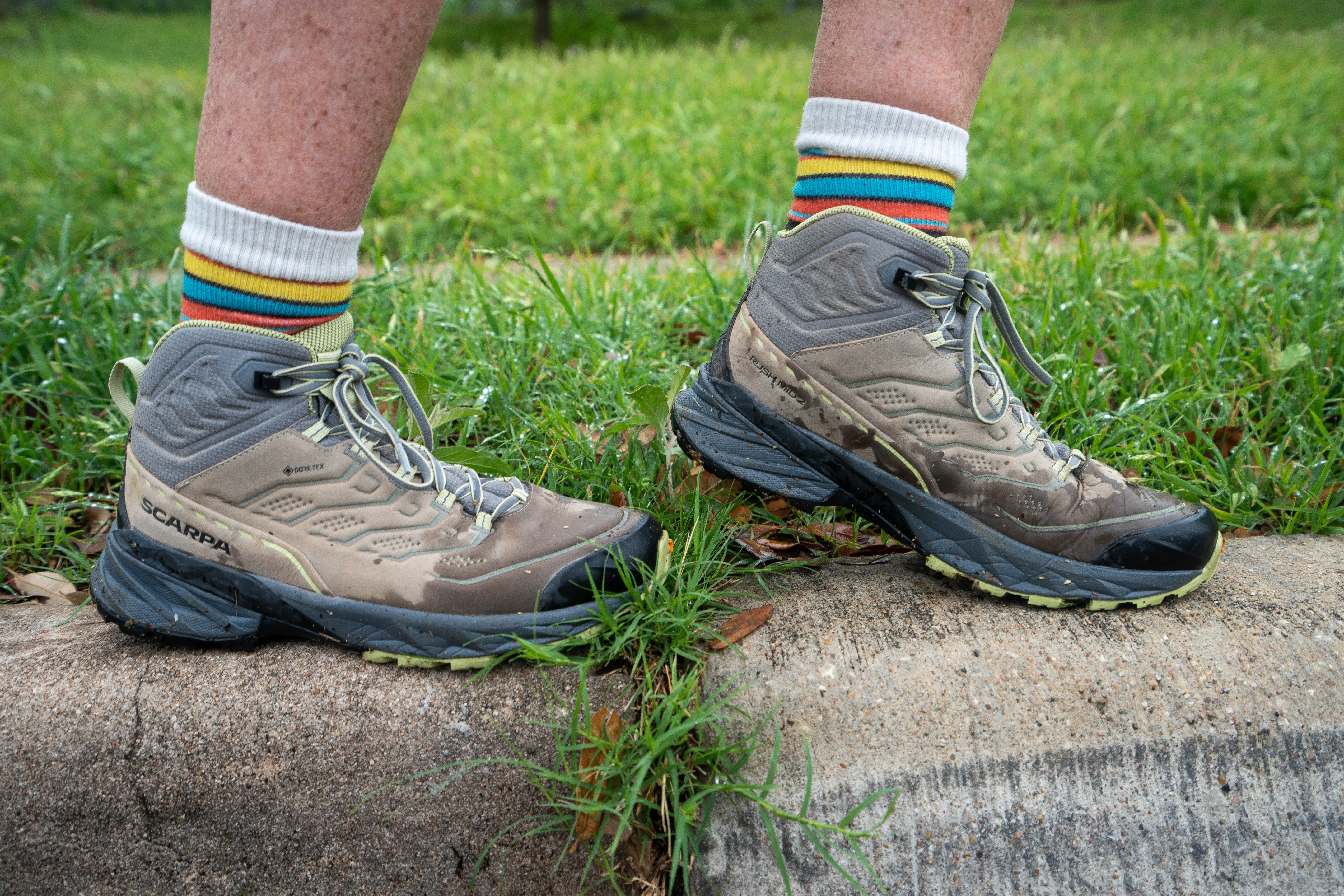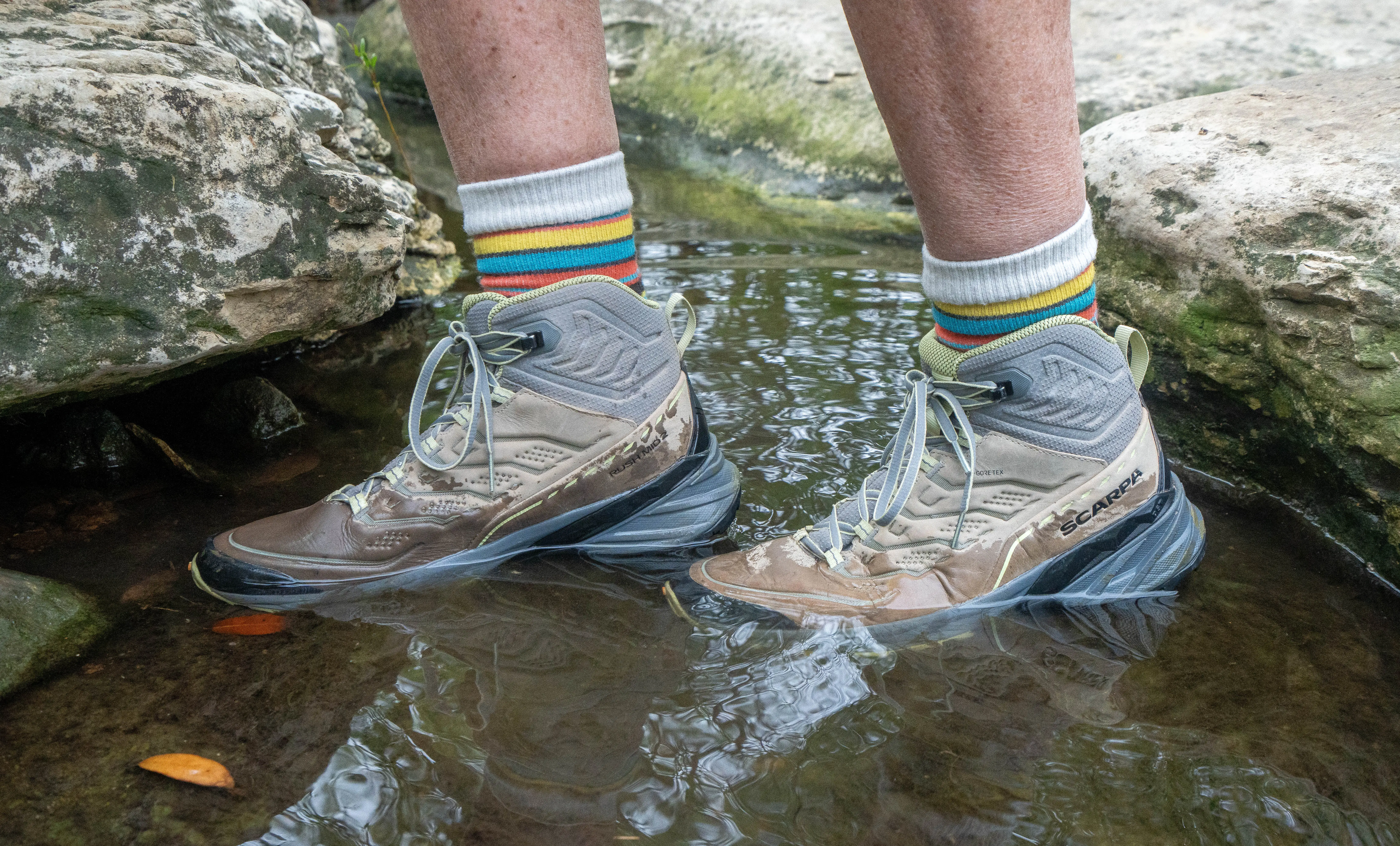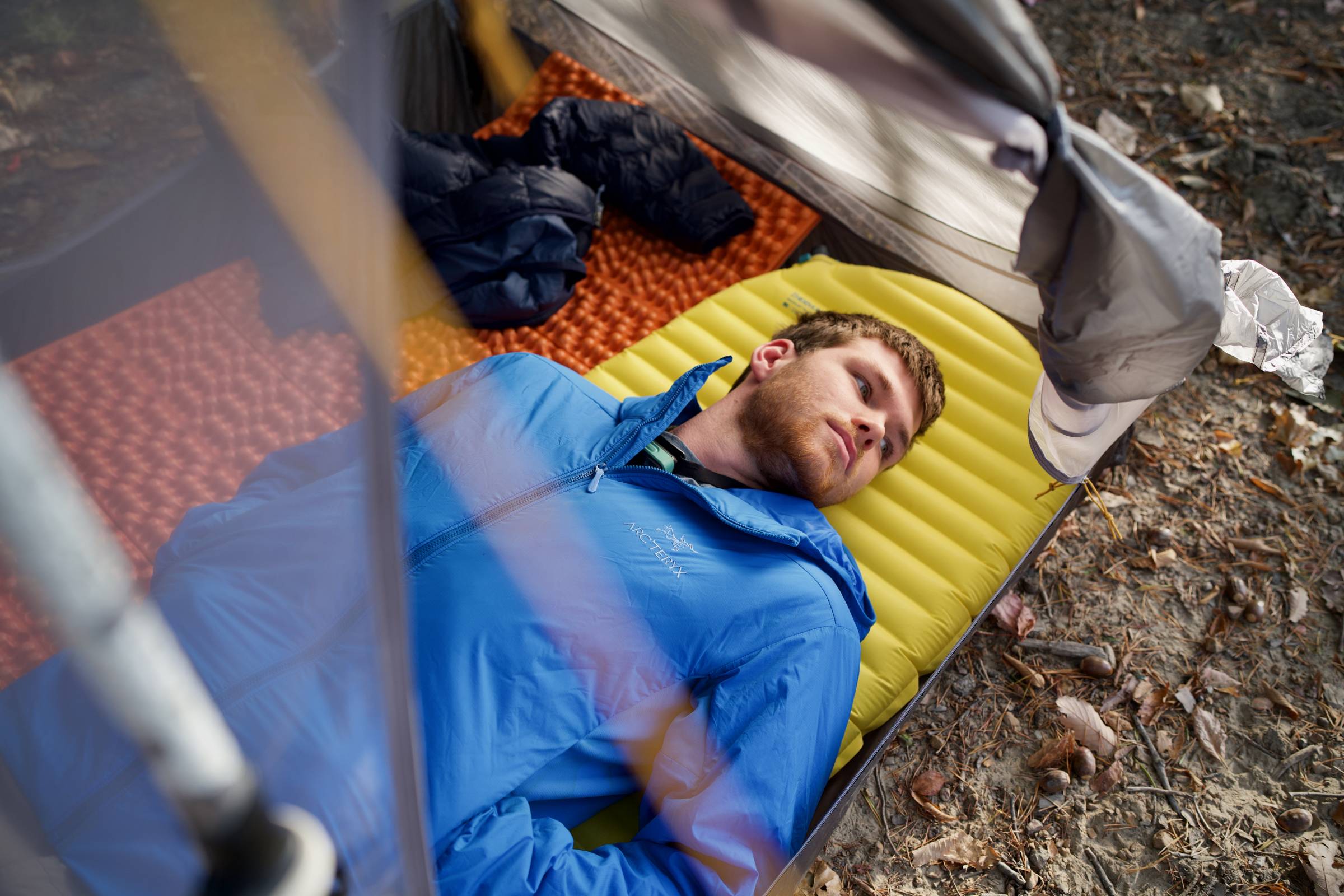I’m buzzing my way up the cactus- and scrub-lined Lost Mines Trail at Big Bend National Park in Far West Texas in the dark on a mission to make it to the top before sunrise. I break into a trot and hop over a tarantula that crawls out of a hole in the rocks along the path.
And I give thanks to my SCARPA Rush 2 Pro Mid GTX hikers, which let me move quickly while providing enough support to clamber over smooth, slick rock and patches of loose gravel without slipping.
I call these boots the mullets of the hiking boot world. Instead of business in front and party in the back, they’re quick-paced runners on the bottom and ankle-hugging hikers on top.
They have become my go-to outdoor footwear. I’m writing an urban hiking guide to trails in my home base of Austin, Texas, which means I spend a lot of time traversing both single-track and paved trails around the city. But I also hike for fun — and packed the SCARPA Rush 2 Pro Mid GTX boots on recent trips to Colorado and the Texas Hill Country.
In short: The SCARPA Rush 2 Pro Mid GTX ($189) combines qualities I love about trail runners with the support I want from a traditional hiker. They’re versatile and streamlined but deliver just enough support via a sturdy platform and a cushioned ankle collar to take you down most trails. Plus, they look good. They’re available in women’s (tested) and men’s models.
To see how the SCARPA Rush 2 Pro Mid GTX compares to the rest of our picks, check out our buyer’s guide to the best hiking boots for women.
-
Comfort
8.9
-
Support
7.6
-
Traction
8.0
-
Durability
7.6
- Height: Over-the-ankle
- Waterproofing: PFAS-compliant GORE-TEX ePE Bluesign waterproof lining
- Upper: Nubuck leather and fabric with recycled content
- Weight: 1 lb., 10.2 oz.
- Available in wide: No
Pros
- Lightweight
- Comfortable
- Nimble
- Supportive for a sneaker-like boot
- Offers great protection in rocky terrain
Cons
- Pricey
- Less arch support than some other hikers
SCARPA Rush 2 Pro Mid GTX Review
Comfort and Fit

Remember the old leather hiking boots your parents wore? You couldn’t just yank them on the first time and head into the wilderness for a long hike without worrying about paying a blistering penalty. Back then, breaking in new hiking boots took weeks or even months.
This boot proves those days are gone. These hiking boots worked without pain for me from the first use — and no, I’m not condoning a thru-hike of the John Muir Trail on their debut appearance. They’re not as stiff as clunky hiking boots from past generations, and that flexibility, along with the extra cushy padding on the ankle cuff and tongue, gives them an almost slipper-like feel. (Imagine that, while hiking!)
Under the Hood
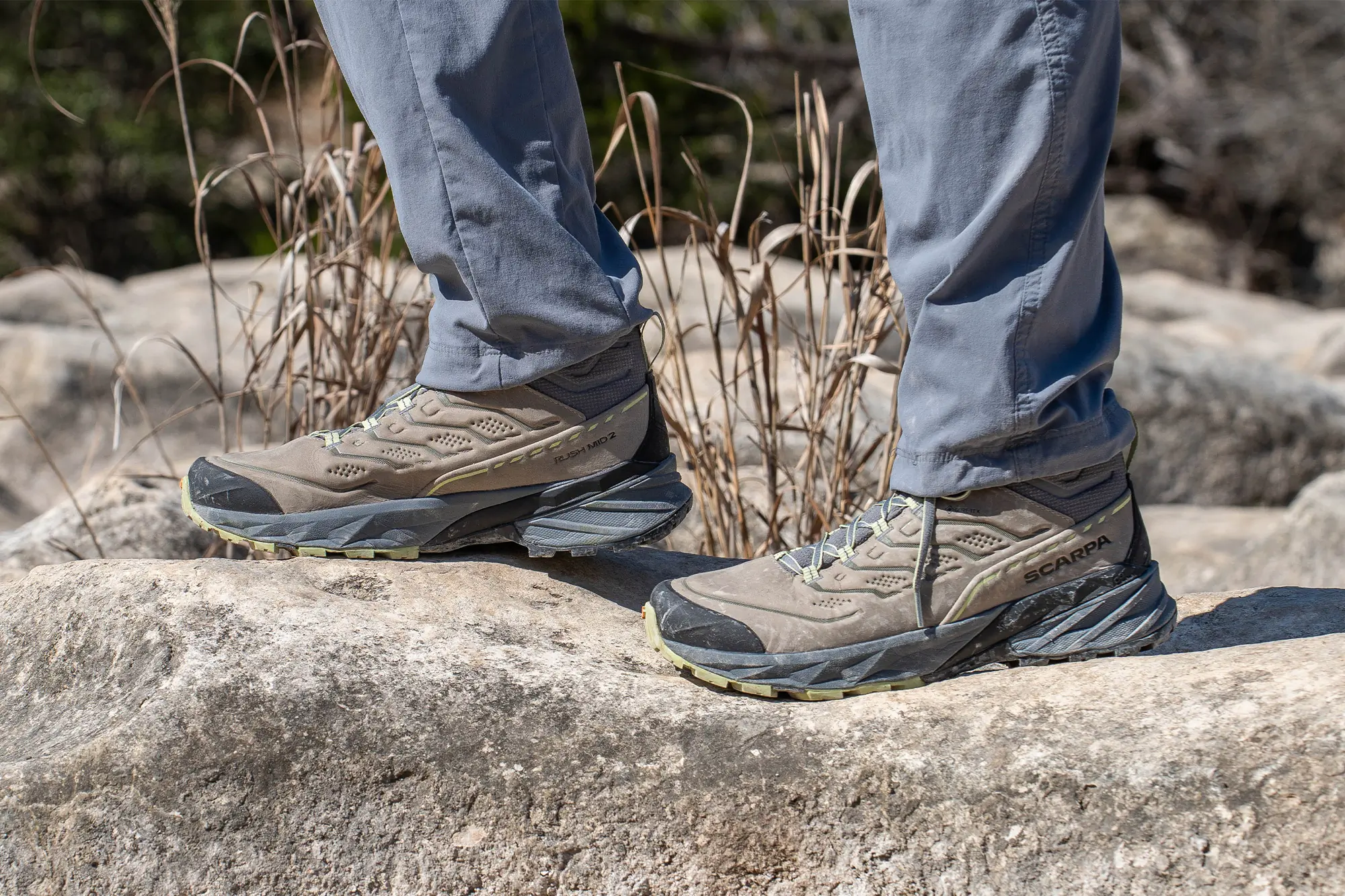



The latest version of the SCARPA Rush 2 Pro Mid GTX (previously the SCARPA Rush 2 Mid GTX ) keeps the Dynamic Stabilizer Torsion (DST) insert, a TPU frame in the heel area that provides extra support against torsion or twisting, that was added in the last update. That gives the boot some spine, which helps keep you steady when clambering over chunky boulders or making your way down steep descents.
That beefier platform, along with a padded ankle cuff (taller than the boot’s original model), provides the most apparent difference between this boot and a true trail runner. For me, the best part about the boot was its lightweight cushioning. Somehow, these boots wrap your foot in cushioning without packing on extra weight. (That mesh upper, by the way, is made of recycled material.)
On the Scales




A single SCARPA Rush 2 Pro Mid GTX boot tips the scale at a mere 13.1 ounces. That’s significantly lighter than old-school hiking boots, which can weigh 3 pounds or more per pair.
On the trail, lighter footwear equals easier, speedier movement. So, you needn’t worry about lugging around a pair of cinder blocks on your feet.
Grip and Traction
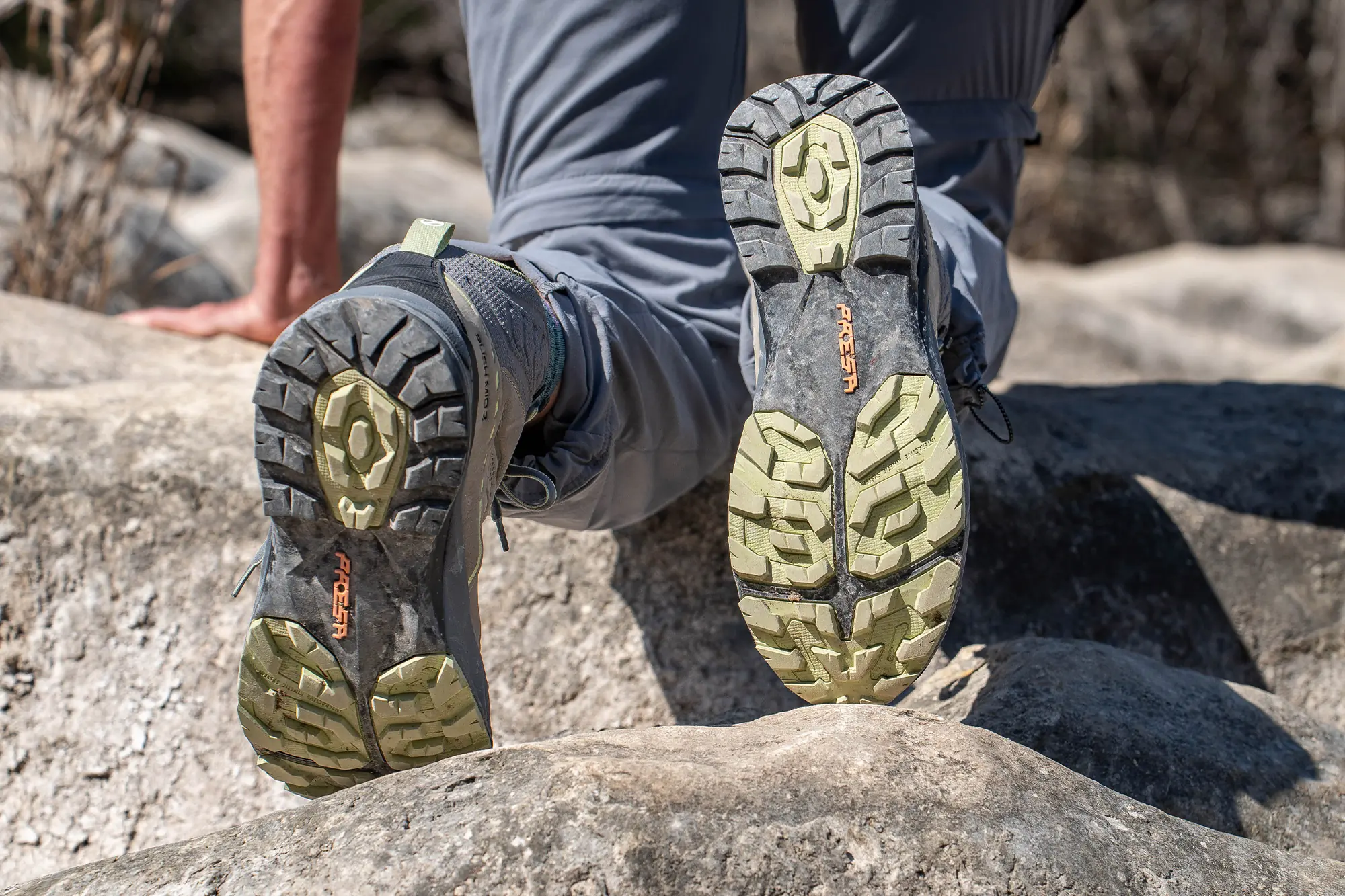



SCARPA is known in rock climbing circles for making good approach and climbing shoes. It makes sense that its hikers also get good marks for traction and grip.
I consistently “stuck the landing” while hiking in these boots. Even on wet rocks, which give me pause since I had ACL replacement surgery 2 years ago, they didn’t budge once I placed my foot. They took me over wobbly rocks, loose gravel, and steep ups and downs without skittering or sending me sprawling.
Weather Resistance




I sloshed in and out of Barton Creek in Austin while exploring a 12-mile greenbelt for my hiking boot. Anyone who plans to hike where there’s water should look for a boot that keeps their feet mostly dry. (It’s often safer just to plunge through a creek instead of trying to hop from rock to rock to avoid getting wet.)
To see how they’d perform, I completely immersed the SCARPAs in the creek. Although a little water soaked in from the top, the boots dried out quickly. But parts of my socks stayed damp longer than I’d prefer, creating a warm, swampy feeling. Still, compared to a non-waterproof boot, these are a vast improvement.
Curb Appeal




Hiking boots seem to fall into two camps — boring dark brown, black, or gray color schemes or eye-popping disco color palettes with neon orange or electric blue accents. SCARPA again meets in the middle, offering this boot in a single color — neutral sage gray on the outside with apple green accents and interior padding. Their profile, too, has subtle good looks — not too angular, not too bloated, but just right.
Room for Improvement




The biggest drawback to these hikers is their price tag. At nearly $200, they’re a significant investment. But if you like to move fast without sacrificing decent ankle support, they’re worth the investment.
The SCARPAs also have less arch support than some other boots. I’ve dealt with plantar fasciitis in the past, and they still performed well for me. But, if you need serious, feel-it-on-your-feet support below your foot, you might want to consider other models, including The North Face Offtrail Hike LT Mid GORE-TEX boots we tested.
Also worth noting? The SCARPA Rush 2 Pro Mid GTX has just one metal hook at the top of the laces, while most hiking boots have two or three. I was able to crank the fit down nicely by double looping, but if you want more adjustability, you might look for a boot with more hooks.
Conclusion




The SCARPA Rush 2 Pro Mid GTX will work best for hikers who want the lightweight maneuverability of a trail runner but still like the support that a beefier boot offers. They’re good in uneven terrain, don’t weigh your feet down, provide decent waterproofing protection, and look good, to boot.

